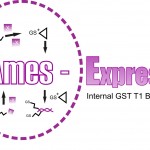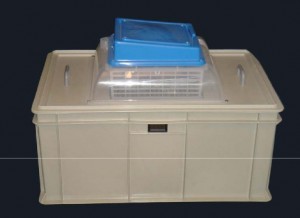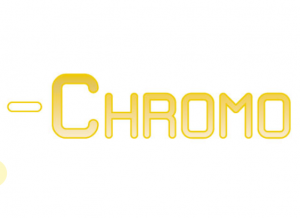Ames Express – GST T1-1
The EBPI TA1535 and TA100 Ames ExpressTM Strains have hisG46 mutations (biomarker for base-pair substitution mutagens), an amino acid substitution of a leucine (GAG/CTC) by a proline (GGG/CCC) on the hisG gene. The hisG gene encodes phosphoribosyltransferase, an enzyme involved in the first step of histidine biosynthesis. The recombinant expression of GSTT1-1 protein helps in the bioactivation of drug and foreign compounds into DNA-reactive mutagens. The Strains are designed to be used in EBPI’s newly developed Modified Ames ISO Kit, though can also be inserted into the Traditional Ames Test as well as EBPI’s widely used Muta-ChromoPlate Kits.
Benefits of the Ames ExpressTM Strains:
- Member of the glutathione s-transferase family (more specifically the theta class), involved in the metabolism of xenobiotics.
- Functions as a dimer and performs conjugation reaction (Phase II), which accounts for 25% of drug metabolism and bioactivation.
- Expression of GST theta 1 is found in liver, red blood cells, lung, kidney, brain, skeletal muscle, heart, small intestine and spleen.
- System does not require S9 mix to observe bioactivation of certain mutagens.
- Internal GST T1-1 Bio-Activation system based on recombinant human GST enzymes
EBPI 888/ 204 expression of GST T1-1:
TA1535 EBP888 hisG46 -1 Base-Pair Substitution Recombinant expression of GST-T1-1 enzymes
TA100 EBP204 hisG46 -1 Base-Pair Substitution Recombinant expression of GST-T1-1 enzymes
Educational Applications
Click here to learn more the role of the Ames ExpressTM Strains for educational use.
Environmental Applications
Click here to download EBPI’s Ames ExpressTM Environmental Toxicology Handout.
Medical Toxicology Applications
Click here to learn more the role of the GST T1-1 in the field of Medical Toxicology
Metabolically Activates Carcinogens:

Haloalkanes – more specifically Dihaloalkanes
– ex. ethylene dibromide (pesticides, flame retardant precursors and antiknock agent (gasoline additives))
– ex. bromodichloromethane (prevalent disinfectant found in drinking water)
1,3-Butadiene diepoxide (crosslinking agent in textile and preservative)
The Ames ExpressTM System:
This system acts as an in vitro mimic involving the uptake and breakdown of xenobiotic compounds by a mammal and its liver enzymes, resulting in the generation of mutagenic products inside the living system. The recombinant GSTT1-1 protein also serves as a cost effective and animal friendly alternative to the S9 rat liver extract mix which is the current bio-activation standard . Like EBPI`s P450 expressing strains, the recombinant GSTT1-1 reductase expression system is that the reactive metabolites will be generated inside the cell rather than outside the cell. As a result, this mode of bioactivation will allow short half-life reactive mutagens enough time to reach DNA sites allowing for an increase in sensitivity to mutagenesis.
GST T1-1 is a Phase 2 enzyme responsible for attaching glutathione conjugate molecules to reactive sites on a toxicant. GST acts primarily as a detoxification enzyme and the products are, by enlarge, excreted without incident. However, certain classes of compounds produce reactive metabolites upon conjugation with GST. Haloalkanes, organic thiocyanates, nitrosoguanides vicinal dihaloalkanes and quinones all produce reactive GST metabolites that cause mutagenicity. These reactions are important mutagenic pathways for several prominent pollutants and can serve as biomarkers for the presence of polychlorinated alkanes and alkenes in waste water effluent and drinking water samples.
Click Here for information on P450 1A2 Ames Express Bacterial Strains.









